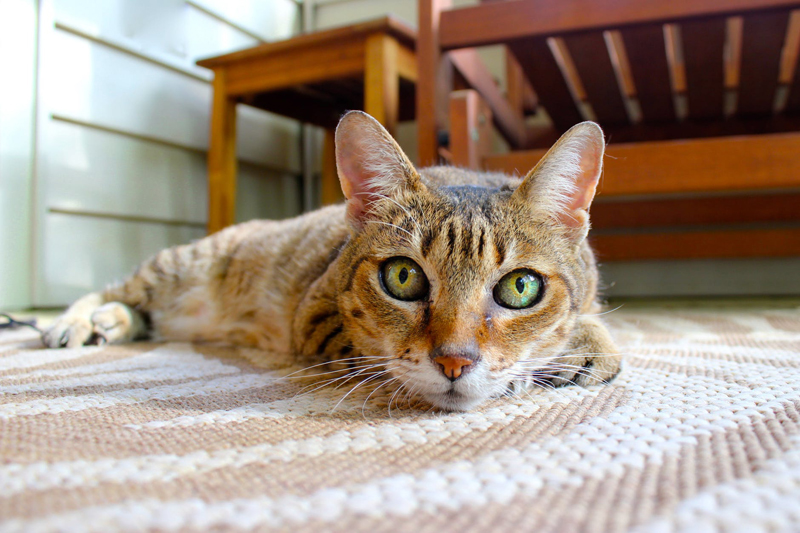Book Review - Locker Hooking

One of my favorite instructional books on Locker Hooking is "Kathleen’s Fabric Locker Hooking" written by Kathleen Carpenter.
The book begins with Kathleen’s history and moves into tools needed and simple instructions with pictures for tearing fabric, joining fabric strips, whip stitching the rug canvas and weaving in “tails”. If you are new to Locker Hooking, Kathleen has a beginner pattern for a potholder to help you get started and helpful tips for maintaining the correct tension to keep loops uniform. The book also includes a pattern and color plan for a pillow and nine patterns and color plans for rugs.
Locker Hooking doesn’t require a lot of tools or supplies. You can get started with a locker hook, latch hook rug canvas, cotton fabric or recycled cotton clothing, string, scissors, ruler and a permanent marker. Supplies can be found in many craft stores or online. The Locker Hook tool cost between $3.00 and $10.00 and Locker Hooking twine will cost between $2.00 and $4.00 depending on where you find them.
This book is filled with colored pictures that take you step by step through the process of Locker Hooking as well as pictures of the completed rugs. For anyone interested in recycling clothing or using up left over fabric, there’s a pattern for a dark and light blue rug called “Dave’s Jeans” and another pattern called “Random Rug” which requires 8 yards of random colored material. The book also includes patterns with diamond, heart, granny square, tumbling blocks, roses and wedding ring designs.
Locker Hooking originated in England in the early 1900’s. Rugs were originally created using wool and burlap. The locker hook tool looks similar to a crochet hook and has a hole at one end to thread with string.
Kathleen’s book focuses on using materials that are easy to find - latch hook rug canvas and cotton fabrics. Using the locker hook, strips of fabric are pulled up through the latch hook rug canvas to form loops and than locker hooking twine or cotton string is pulled through to hold the loops in place. Because of the way Locker Hooked rugs are made, they are strong and washable when cotton fabrics are used.
It takes a little practice to maintain the same size loop throughout the rug, so I would follow Kathleen’s advice to start with the pot holder before moving on to her rug designs.
I purchased this book at my local craft store. It can also be found online and in many of your favorite bookstores.
Buy Kathleen's Fabric Locker Hooking from Amazon.com.
The book begins with Kathleen’s history and moves into tools needed and simple instructions with pictures for tearing fabric, joining fabric strips, whip stitching the rug canvas and weaving in “tails”. If you are new to Locker Hooking, Kathleen has a beginner pattern for a potholder to help you get started and helpful tips for maintaining the correct tension to keep loops uniform. The book also includes a pattern and color plan for a pillow and nine patterns and color plans for rugs.
Locker Hooking doesn’t require a lot of tools or supplies. You can get started with a locker hook, latch hook rug canvas, cotton fabric or recycled cotton clothing, string, scissors, ruler and a permanent marker. Supplies can be found in many craft stores or online. The Locker Hook tool cost between $3.00 and $10.00 and Locker Hooking twine will cost between $2.00 and $4.00 depending on where you find them.
This book is filled with colored pictures that take you step by step through the process of Locker Hooking as well as pictures of the completed rugs. For anyone interested in recycling clothing or using up left over fabric, there’s a pattern for a dark and light blue rug called “Dave’s Jeans” and another pattern called “Random Rug” which requires 8 yards of random colored material. The book also includes patterns with diamond, heart, granny square, tumbling blocks, roses and wedding ring designs.
Locker Hooking originated in England in the early 1900’s. Rugs were originally created using wool and burlap. The locker hook tool looks similar to a crochet hook and has a hole at one end to thread with string.
Kathleen’s book focuses on using materials that are easy to find - latch hook rug canvas and cotton fabrics. Using the locker hook, strips of fabric are pulled up through the latch hook rug canvas to form loops and than locker hooking twine or cotton string is pulled through to hold the loops in place. Because of the way Locker Hooked rugs are made, they are strong and washable when cotton fabrics are used.
It takes a little practice to maintain the same size loop throughout the rug, so I would follow Kathleen’s advice to start with the pot holder before moving on to her rug designs.
I purchased this book at my local craft store. It can also be found online and in many of your favorite bookstores.
Buy Kathleen's Fabric Locker Hooking from Amazon.com.
This site needs an editor - click to learn more!
You Should Also Read:
3.75 Graph 'N Latch Rug Canvas
No Sew Fabric Joins
Related Articles
Editor's Picks Articles
Top Ten Articles
Previous Features
Site Map
Content copyright © 2023 by Christine Dux. All rights reserved.
This content was written by Christine Dux. If you wish to use this content in any manner, you need written permission. Contact
BellaOnline Administration
for details.


